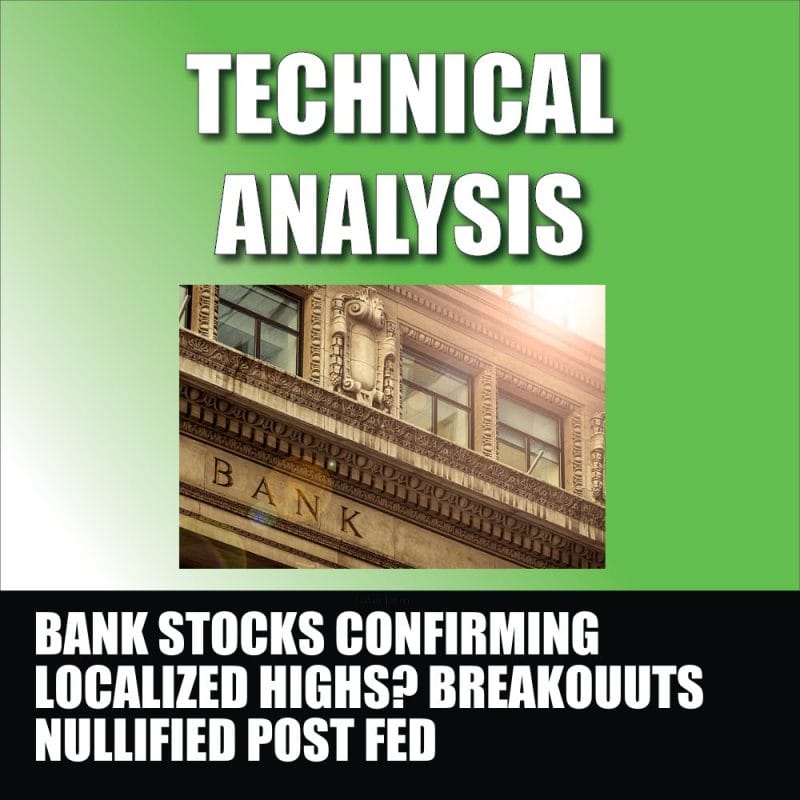Bank stocks. Banks are back in my mind after a recent Zerohedge article has stated that a spike in the Fed’s Discount Window usage hints at a looming bank crisis. You have probably come across the term “repo market”. There was chaos happening in this market just before COVID, and troubles seem to be brewing once again. The way the Fed has alleviated the flooding of money to banks to keep rates low is through something called ‘reverse repo’. The Fed gives the banks money but then immediately borrows back the money lent and pays the banks an interest. This is just one ingenious way that central banks can accomplish their goals while keeping the money supply stable.
If you are not into these kinds of things, don’t worry about it. It probably is something which troubles us central bank watchers and finance geeks. For the layman, higher interest rates have people worried about the banks. Sure, we have seen banks make crazy returns from the investment side of things in the past. This was bringing in bank profits all thanks to rising stock markets. But now stocks are not shooting higher.
Banks core business is lending money. When interest rates were low, banks were doing great business. But with interest rates rising… things are slowing down. Canadian banks top selling products are mortgages. This business is taking a hit with interest rates rising.
I guess the positive thing for banks is the fact that many people’s savings are depleting. The consumer is being squeezed, and many are resorting to borrowing and loans even at higher interest rates. I know this isn’t a pleasant way to look at things, but we do need to talk about things we do not like when we play the markets.
Reading the things above doesn’t make holding banks too appealing. But let’s consider a few things. Firstly, banks do pay dividends. For investors looking for a safe place to park their money, banks are certainly in the conversation alongside utility stocks.
Secondly, many banks are too big to fail. If something does happen, it is likely they will be bailed out with taxpayer money. Whether I agree with this from a moral standpoint is a different story.
Knowing this, let’s take a look at the technical set ups of some bank stocks from around the world.
One common theme: major fall with some relief rally likely printing localized highs post Fed “interest rates higher for longer” statement.

JP Morgan is the largest bank in America. The stock was in a major downtrend but a positive earnings surprise for Q3 2022 caused a major rally. The stock shot above the recent lows and found some resistance just below $140.
Here, the stock began to range just as most US indices as they awaited the Fed rate decision. Since then, the stock seems to have printed a reversal pattern known as the head and shoulders pattern. The neckline has been broken and the stock is now retesting this zone. We should expect to see sellers jump in taking the stock back down to the $120 zone.

Earnings also caused Goldman Sachs to pump. Same market structure with the stock ranging at $390. The stock saw exhaustion and now we are dropping. This is more advanced than JP Morgan as Goldman has already completed the retest part of the breakdown and is already confirming a new leg down.

When it comes to Canada, our bank stocks look a bit bearish. Likely because mortgages are their top product, and with interest rates rising we could be seeing a slowdown in real estate. Well, not “I think” but rather I know as evident from their recent earnings.
Royal Bank actually looked great with a breakout above the $130 zone. This was a major breakout and triggered a reversal. The break was supported by the market idea of the Fed pivoting. Instead, we got the reality check of higher interest rates for longer. The stock has now closed back below the $130 zone invalidating the breakout. We have a false breakout which is bearish. Where to next? Support comes in at $122.

Canadian Western Bank is one I am intrigued by. This bank makes a lot of loans to the oil industry in Alberta and the stock tends to move along with oil. Of course with a global recession bringing oil prices down, and interest rates rising… it doesn’t look like a great setup for Canadian Western Bank. However, geopolitics and OPEC+ shenanigans makes oil prices volatile.
The stock did print a reversal pattern with the breakout on November 10th 2022. Momentum only took us so far with prices stalling and ranging for a few days before dropping. For traders: when you see momentum stall on the daily timeframe with multiple days of range, it is usually a sign that momentum is not there. Usually a sign the stock will fall rather than continue higher.
We of course had earnings which then saw the stock gap down on a miss, and we have also confirmed a false breakout closing back below the $24 breakout zone. Next support comes in at $21.

Now to a surprise.
Deutsche Bank was one of those banks that many contrarians were expecting to go under. The next Lehmann, possibly triggering a bank crisis. We now have another candidate. More on that below. But Deutsche is turning things around.
The bank stock is actually continuing its momentum higher rather than reversing like the American and Canadian banks covered in this article. If we get a close above $11 by the end of the day, the stock will continue to rally heading up to resistance at $12.

HSBC is on watch given the things going on in China. The company is also making news in Canada as RBC is set to acquire HSBC Canada for $13.5 billion.
HSBC has had operations in Canada since 1981 and currently has approximately 130 branches, 4,200 employees, serving roughly 780,000 customers in Canada. According to its most recent quarterly report, HSBC Canada had $125 billion worth of assets as of the end of June, and posted an operating income of more than $1.1 billion in the first half of this year. HSBC has about two per cent of all the bank deposits and mortgages in Canada.
The deal is expected to close next year, pending regulatory and shareholder approval.
The stock triggered a reversal by breaking out above the $27 zone. Since then, higher lows have taken the stock up to resistance at $31. This is where we stand now, with the stock looking to either break above recent highs, or close below $29.75 triggering a move lower.

When it comes to ‘next bank to collapse’ watch, then Credit Suisse is at the top of the list. I mean look at that stock chart. The bank is trading at $3.00 per share on US markets!
The stock continues to print fresh all time lows and some analysts are questioning the bank’s lender’s credibility due to a lack of visibility on its ambitious turnaround plan.
The bank is undergoing a shakeup to get operations back on track but the rebuilding process is coming under scrutiny. Analysts have ‘little conviction’ in the Swiss banks long term strategic plan. The bank is expected to sustain heavy losses in 2023 and 2024 unless they can turn things around. So far, the goal is for a focus on private banking.
The stock continues its downtrend but a range could confirm a bottom. We would need to see a close above $3.50, but unfortunately, it looks like the stock will continue lower as it is at the bottom of its range.







